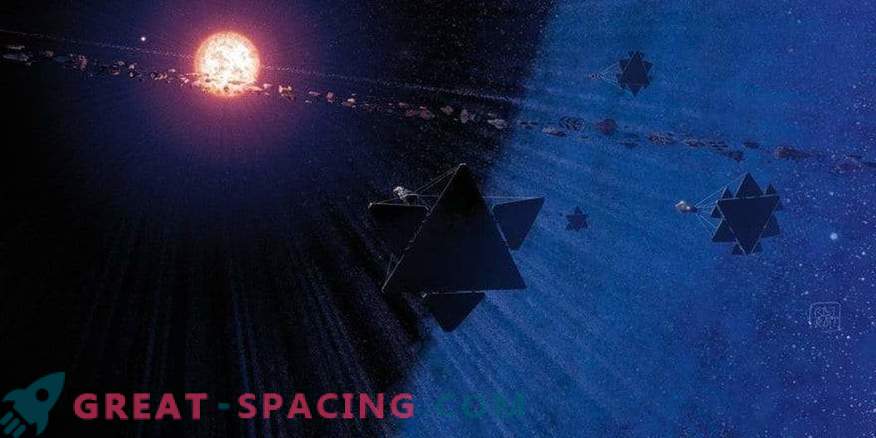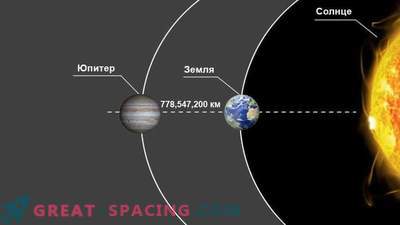
Star regatta around GJ436. Due to the inclination of the orbital plane, an amazing picture is created with a planet hiding in the background (bright spot)
We are accustomed to observe how the planets of our system rotate along the equatorial plane of the native star. The latter also makes a revolution, and the axis of its rotation is aligned with the rotational axes of the planetary orbits. All this forms an ordered system. But space is capricious, because scientists from the University of Geneva (Switzerland) have found an inverted system.
The planet near the star GJ436 was called “hairy” because it evaporates, resembling a comet. But it is distinguished not only by the presence of a huge gas cloud, but also by a bizarre orbit. It is polar: it is not in the equatorial star plane, but passes practically over the star poles.
The inclination of the orbit of this plane has confused scientists in the past 10 years. Instead of an ordered orbit, GJ436 forms an extremely flat and highly eccentric ellipse, due to which the distance of the planet to the star varies greatly along the orbital path. Moreover, the planet is under large-scale tides because it is too close to the red dwarf (less than 3% of the Earth-Sun distance). Orbital paths are important to study because they talk about the process of forming a system and its past. If a larger planet were near, then the bizarre rotation of GJ436b could be explained. In this case, the analysis shows that it should ignore the circular motion and choose an inclined path (as seen in the observation).
Calculations also show that the planet could previously be located farther from the star and approached only recently. Probably, there is a satellite not yet found, affecting it by gravity. Therefore, the next goal is to find a mysterious object or to disprove its existence.











































